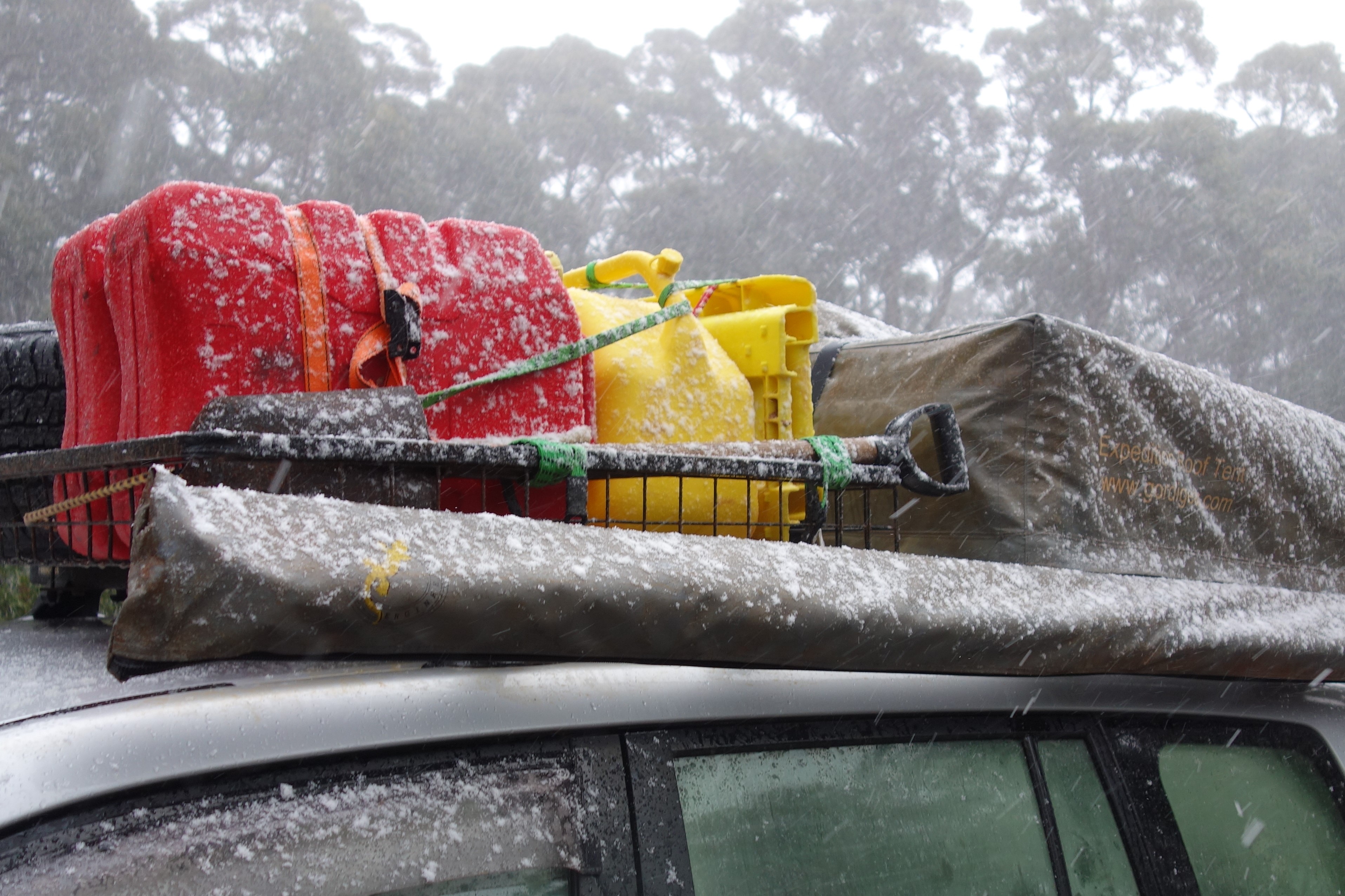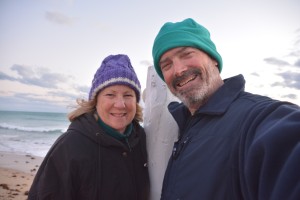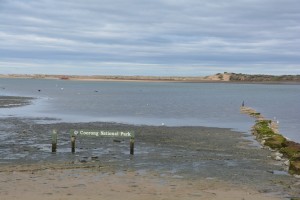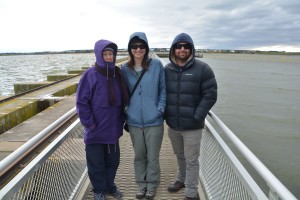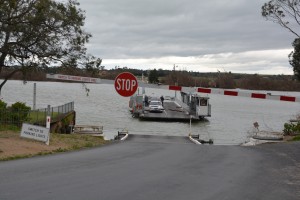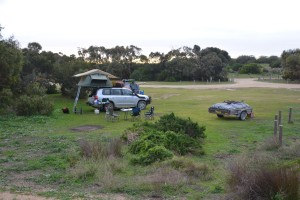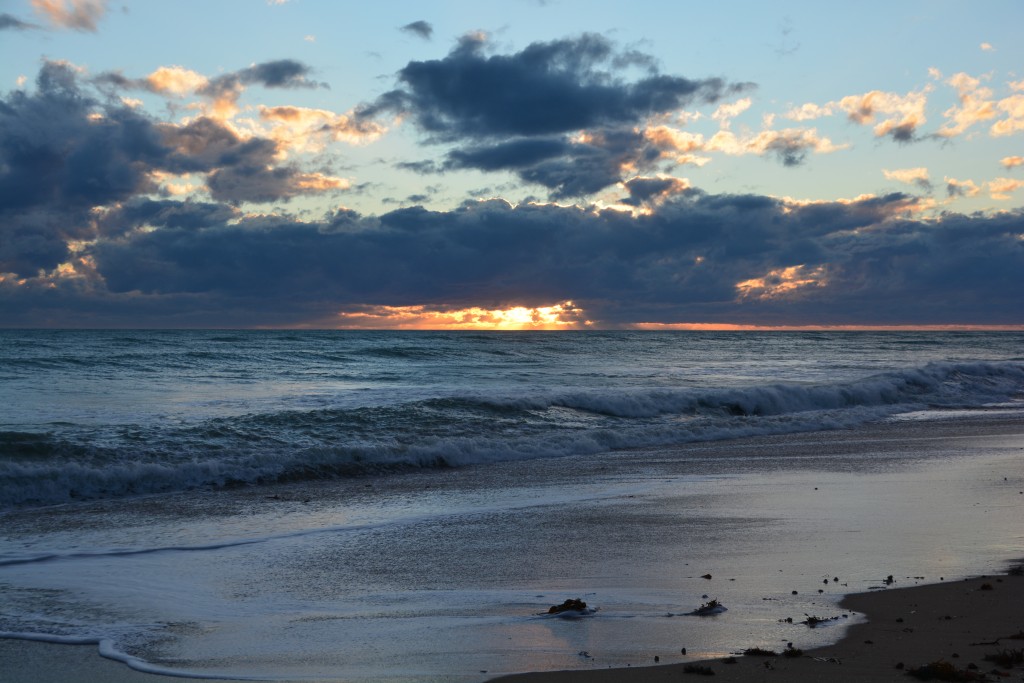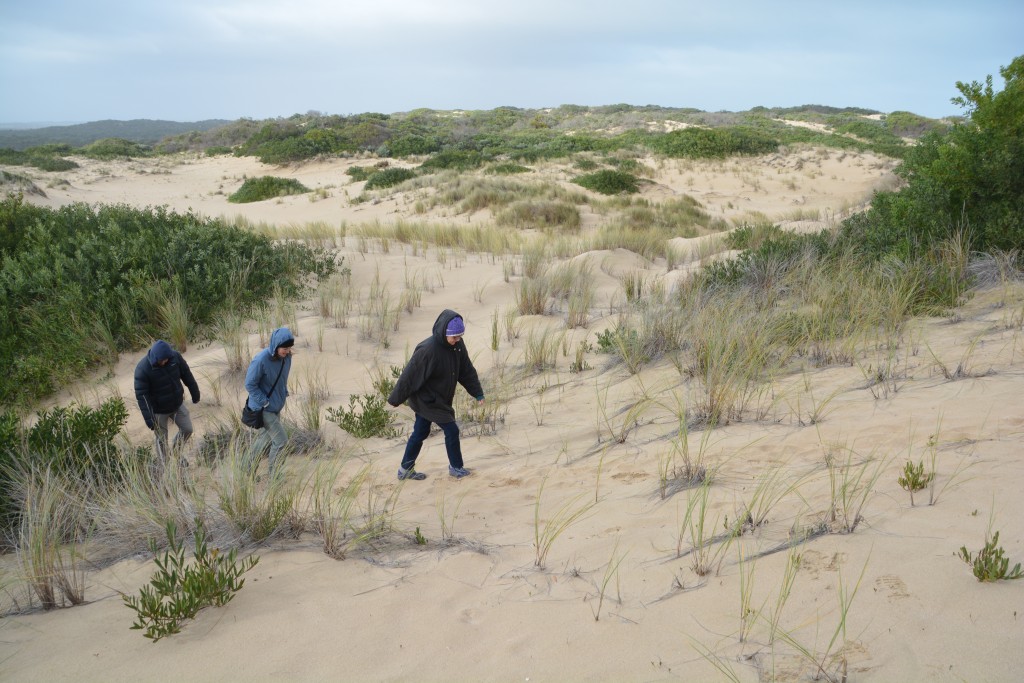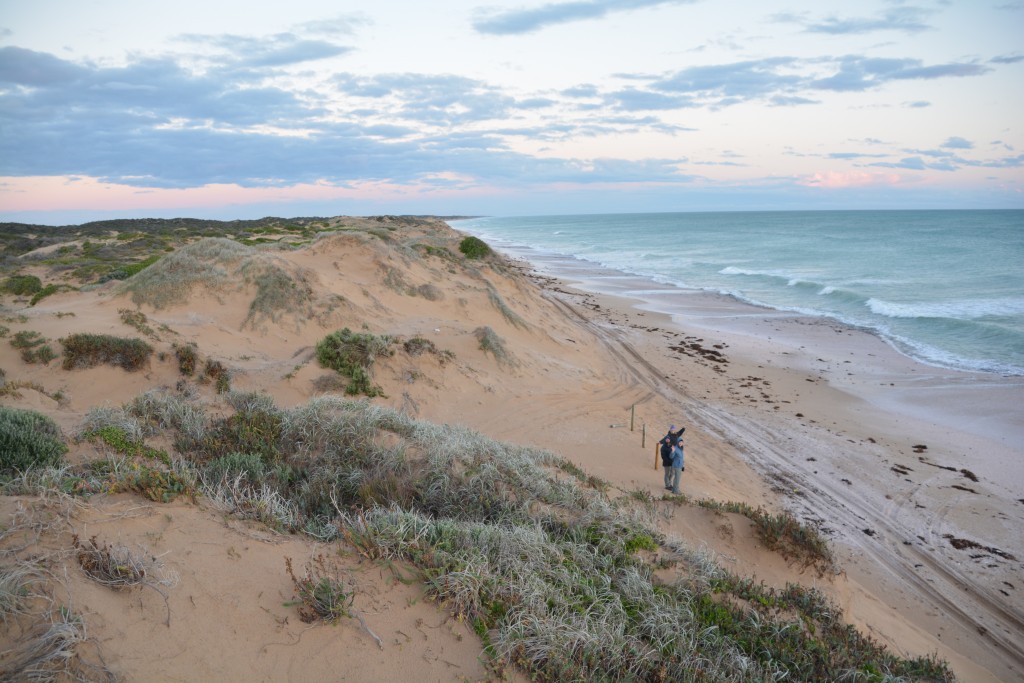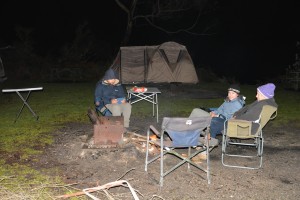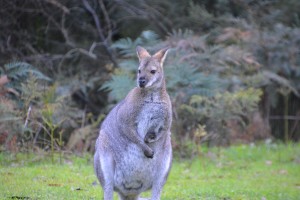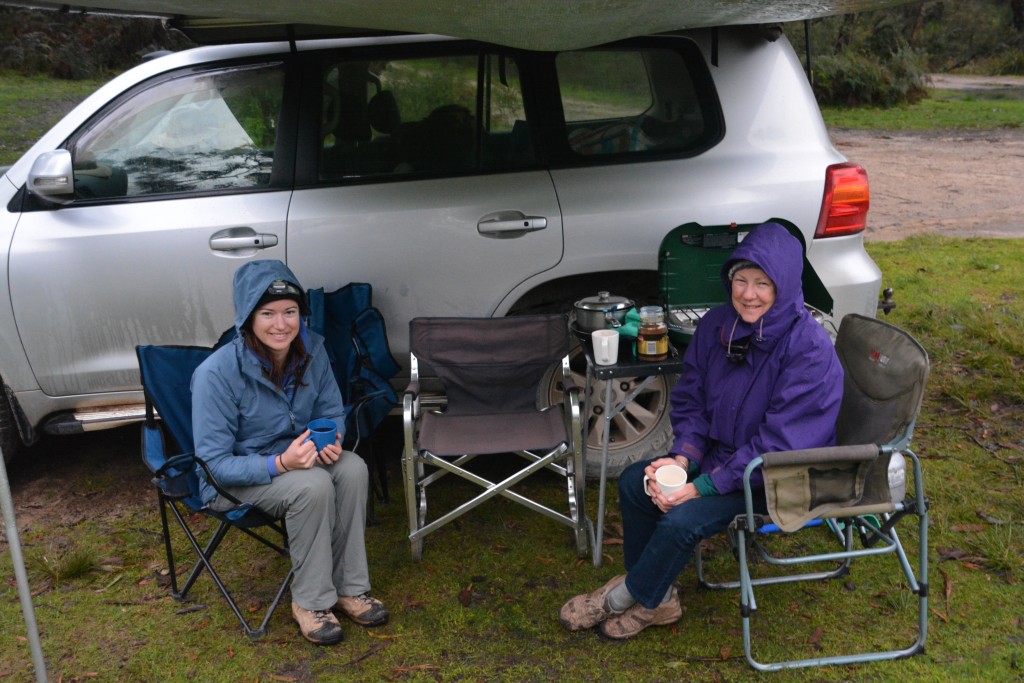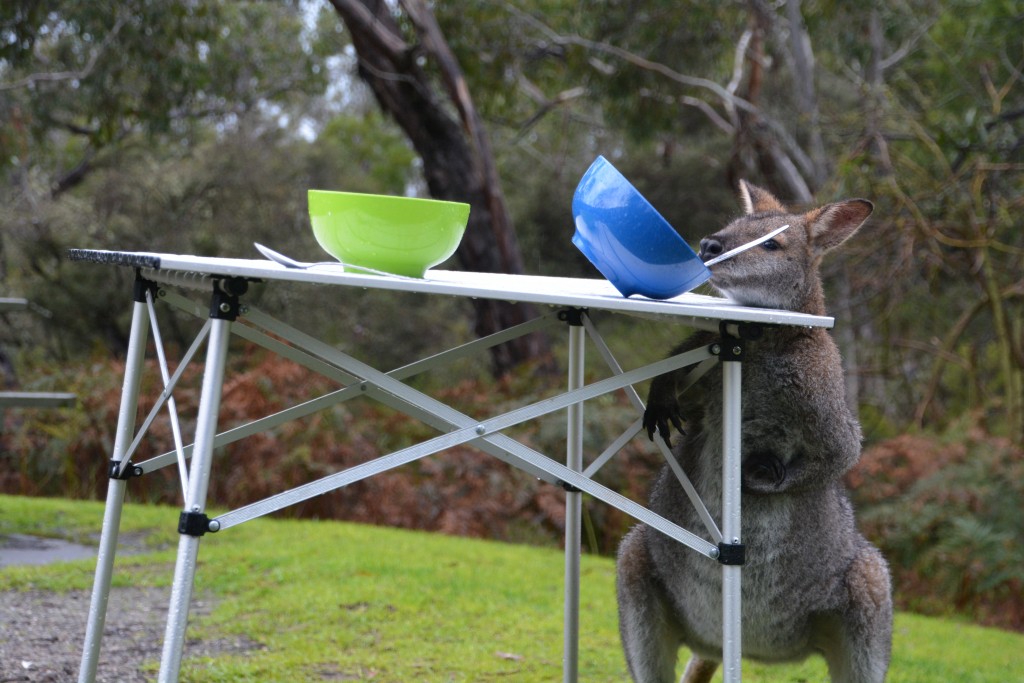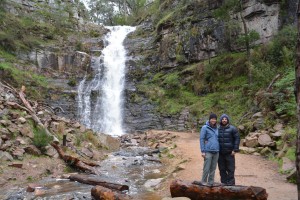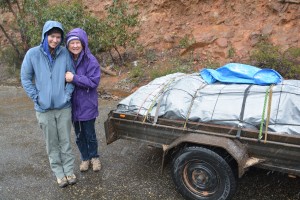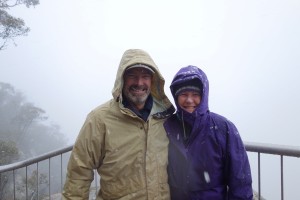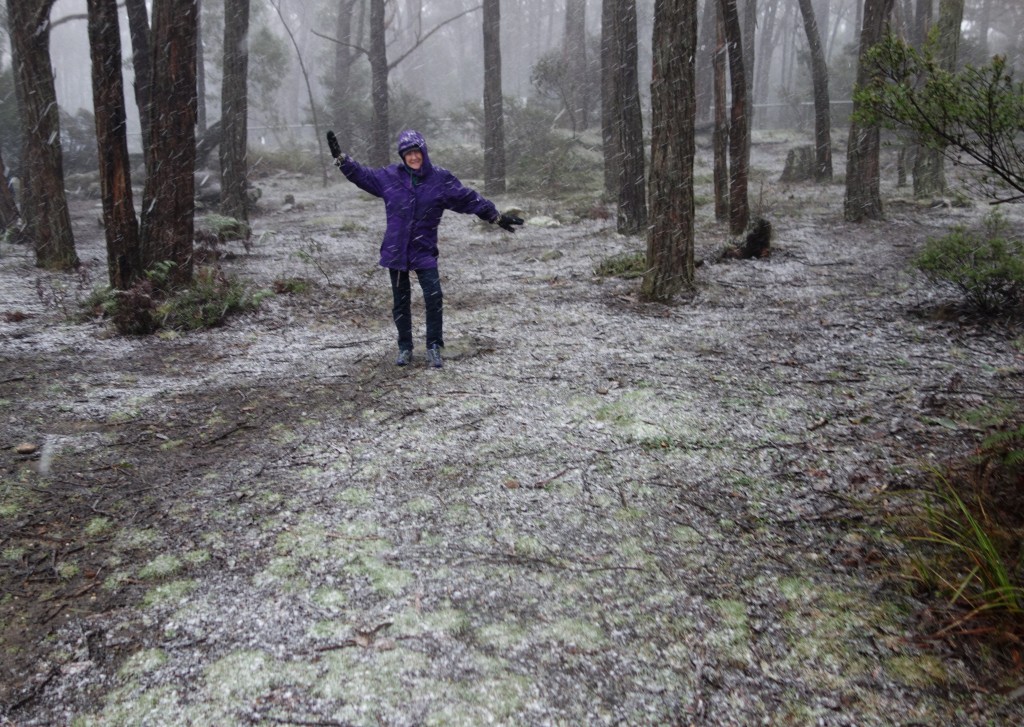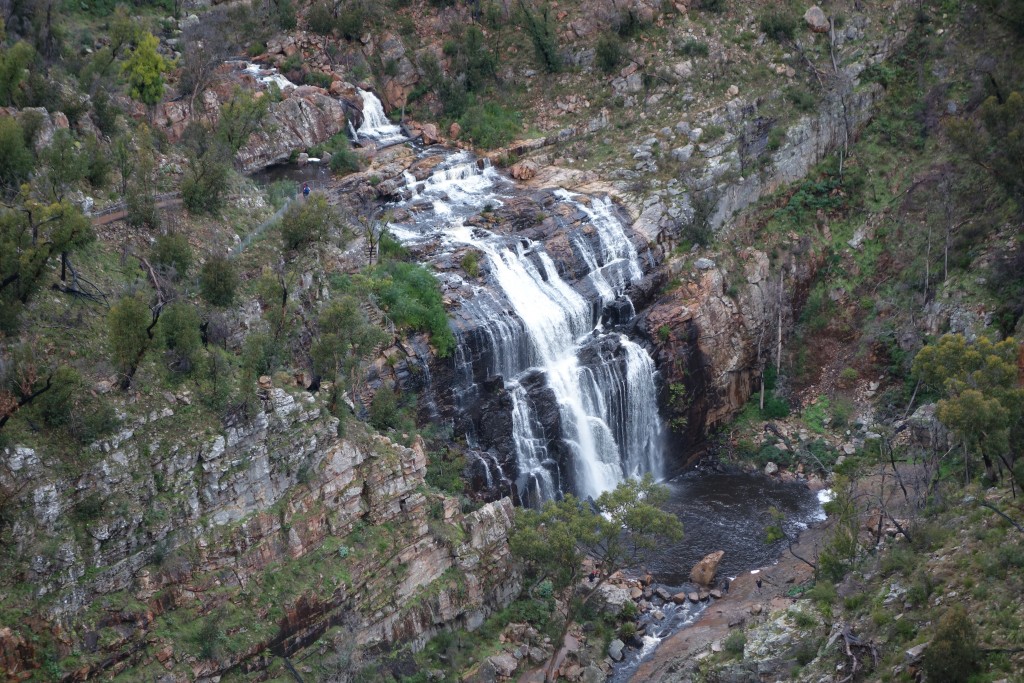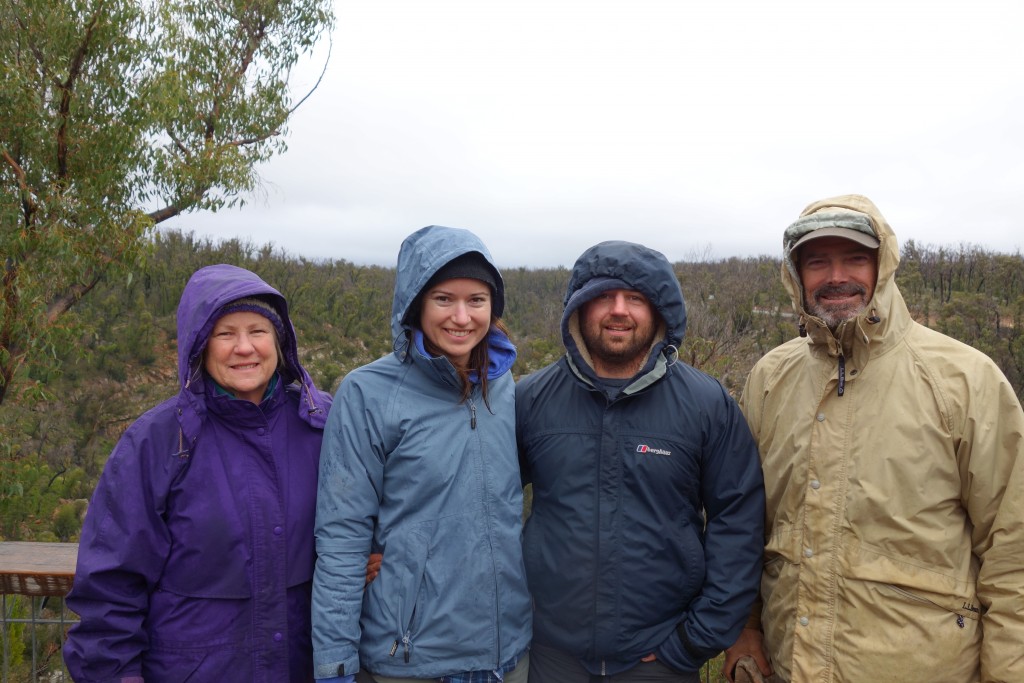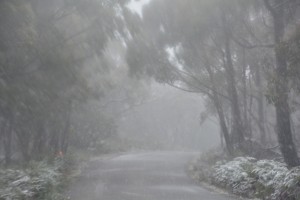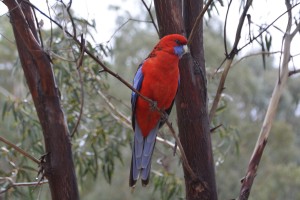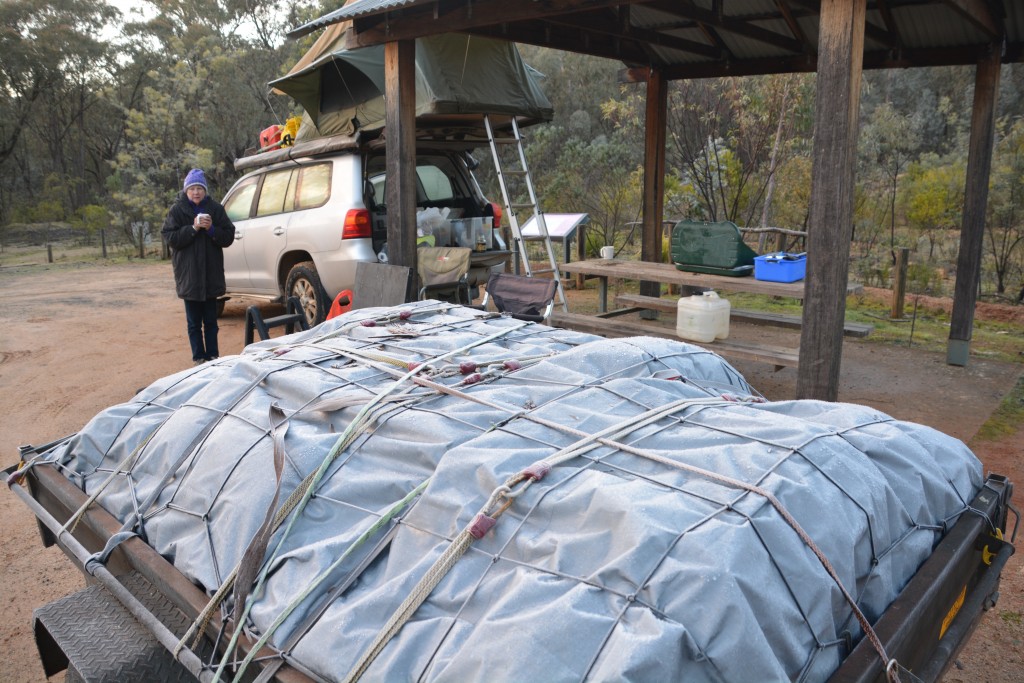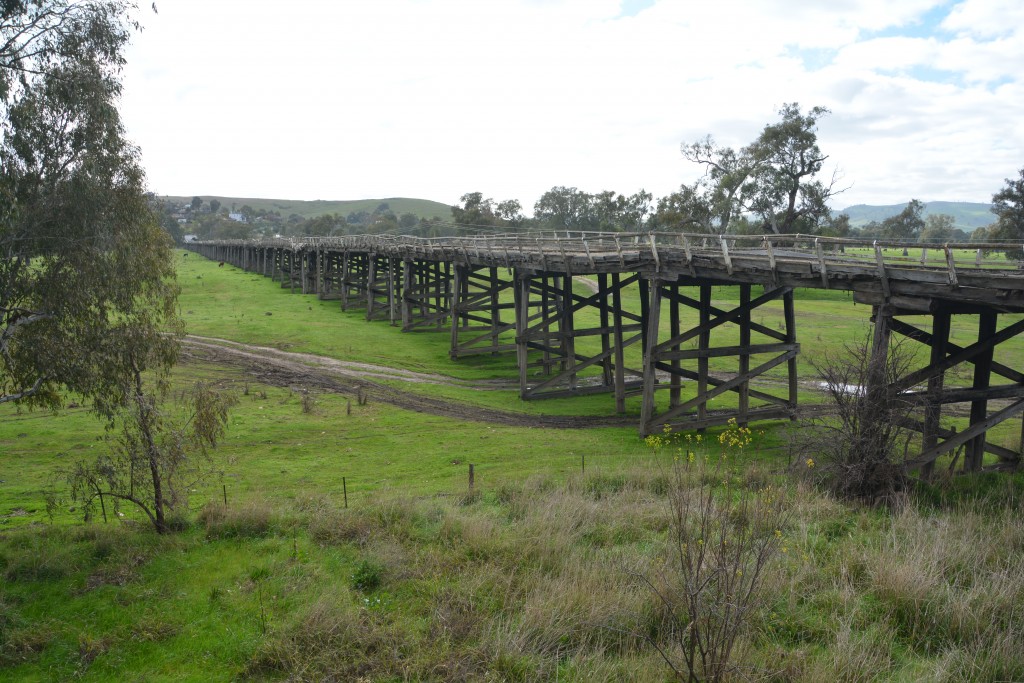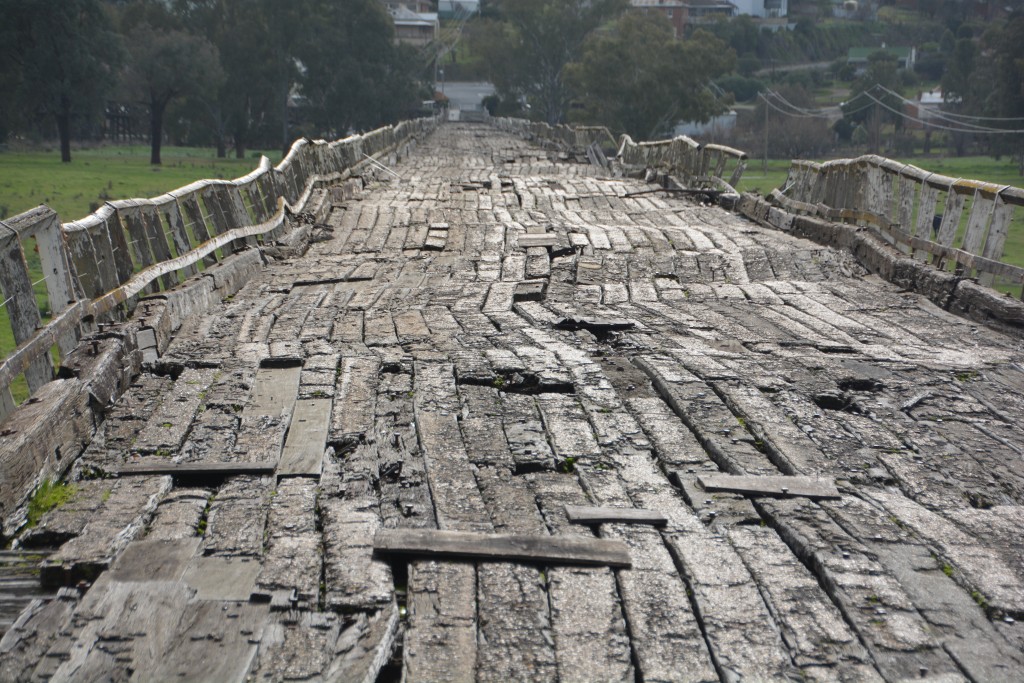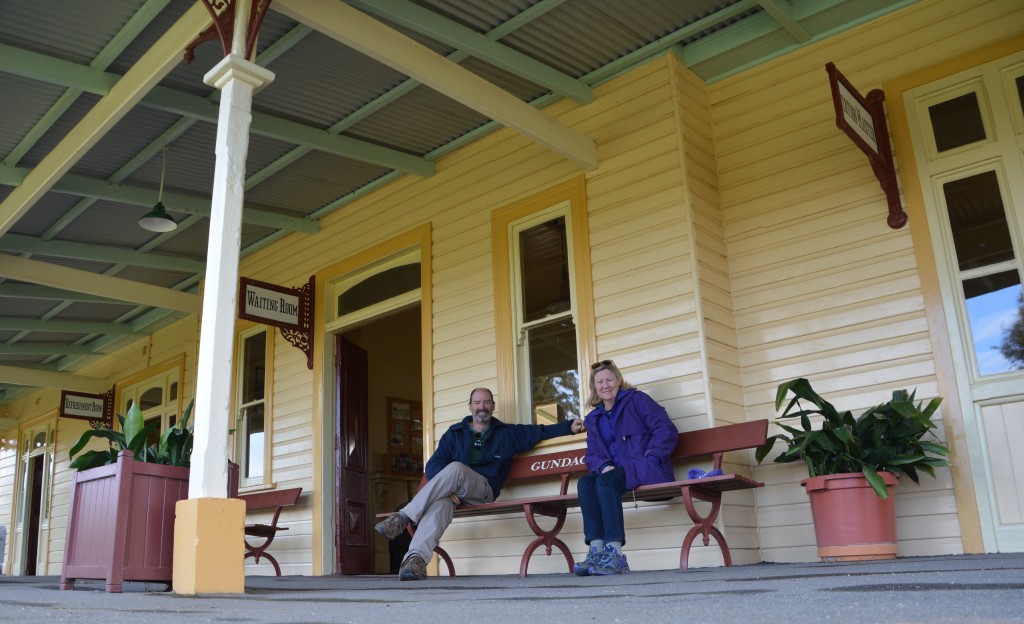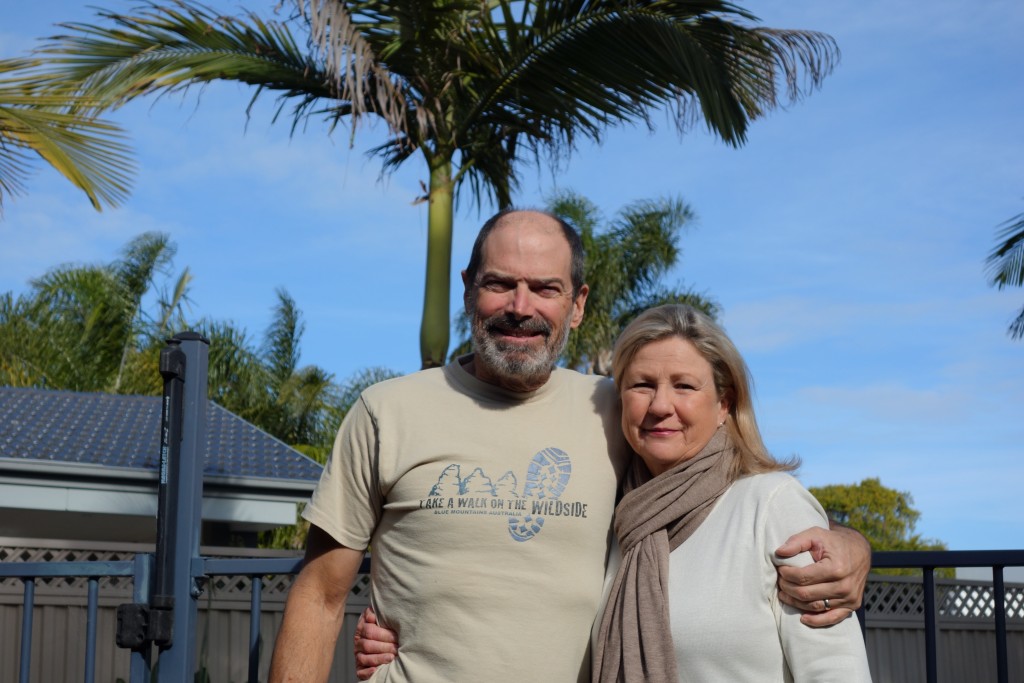Homeward bound
The Cool Convoy’s epic journey across the Simpson Desert was finished with all six vehicles and 17 people successfully making the 3,600 km round trip journey from Adelaide. But for two vehicles and the four of us we still needed to drive back to Sydney, accompanied by our trusty trailer carrying all the group’s camping gear. But this second shoulder trip, as it was called, would not be a quick trip home. Instead Anna had picked out a number of spectacular national parks and other attractions to see along the way and we were itching to get into it. And of course it was raining.
We headed south through the McLaren Vale wine district under a grey drizzling sky to Hindmarsh Island where we drove out to the Mouth of the Murray to see where this might river finally flowed into the ocean. The Murray is the longest river in Australia, winding 2,500 km from the Australian Alps all the way to its mouth in South Australia where it finally drains into the Southern Ocean. Along the way it irrigates vast open plains and fertile lands, feeding the food bowl of the country.
Near the town of Goowla we visited the Goowla Barrage, partly because we didn’t know what a barrage was but based on all the signs it seemed to be important. The Goowla Barrage turned out to be an amazing engineering feat, built in 1940 to control water in and out of the river and the ocean, depending on the tides and time of year. Like a series of giant dykes, there’s actually a series of barrages in the region that help monitor and maintain water levels, sustain life, protect commerce and allow people to live in this unique watery environment.
We continued on around Alexandrina and Albert Lakes through some lovely pastoral countryside, still cold and miserable but somehow appropriate given the windswept nature of the area. We crossed the Murray much like we did three weeks ago on the first shoulder trip, driving onto a double cable barge at Wellington, then down along coast, finally reaching Coorong National Park.
The Coorong is a lagoon ecosystem that separates the ocean from the inland area and is famous for its remote location and rich bird life. It was a cold windy night for us, temperatures in the low single digits and there were no other campers in sight. After driving out on the beach and exploring the sand dunes we tucked ourselves up behind some trees to get out of the swirling cold wind and settled in for the night. Fires weren’t allowed here but we were fairly confident Ranger Rick would have taken pity on us if he had dropped by. Instead we had a good night huddling around our little fire.
The next day we explored more of this unique environment, up and over sand dunes, around lagoons and various waterways, magnificent long beaches and crashing surf. Through generally shyte weather we eventually made Mt. Gambier around noon. The town was distinctly unimpressive but we drove up the hill for great views of Blue Lake and Valley Lake, both filling old volcano plugs and providing spectacular views all around. Combined with a fascinating visit to a deep sinkhole which had been converted into a unique garden and walking paths we decided Mt. Gambier rocked after all.
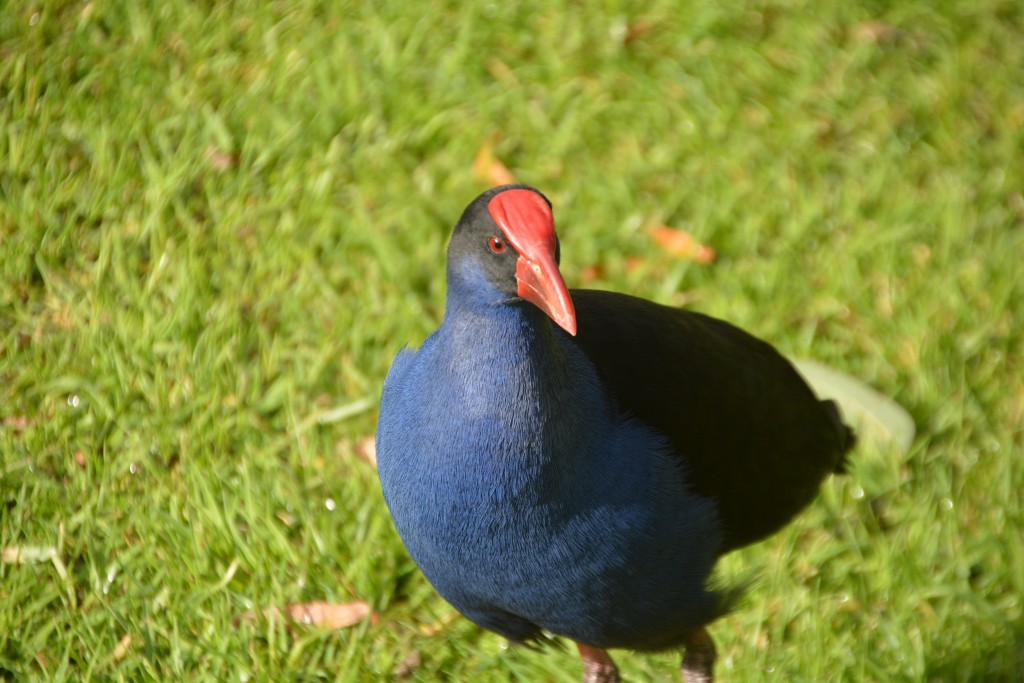
We were entertained during our picnic lunch on the shores of one of these volcanic plug lakes by a curious purple swamp hen
Crossing the border into Victoria didn’t improve the miserable weather but we drove into Lower Glenelg NP, where we were hoping to camp the night. After travelling down a wet slippery muddy track through the deep coastal forest we found our campsite magnificently set on the banks of the Glenelg River. With patience we were finally able to build a fire with wet soggy wood, intermittent rain and the possibility of snow our constant companion.
The campsite was memorable for its wildlife, in particular we were visited by a couple of red necked wallabies, the big one featuring a mangled left forepaw which earned him the nickname of Lefty. He was a very friendly fellow and didn’t mind mingling with us around the fire. But when a bag of chips accidentally hit the ground a brush tailed possum moved in with lightning speed to claim the prize and noisily munch them down. Later that night we saw a sugar glider, which is a small marsupial about the size of a squirrel. We also had close encounters with many birds, including a little blue tern and a yellow breasted robin.
The next morning was cold and rainy with temps near zero and we rushed between rain squalls to make brekkie and pack up. Our friend Lefty came in again to try to lick the cereal bowls that were left out in the rain.
From a muddy and soggy national park we travelled north towards the Grampians, rain and wind blowing us all around and forecasts for snow down to 300 metres. Grampians National Park is one of the most popular parks in Australia and with good reason. The Grampians rise abruptly from the surrounding Western Plains as a series of rugged sandstone mountain ranges and forests with great wildlife, dramatic lookouts and a wide network of walking tracks. We first visited the Grampians with the kids almost 20 years ago but that was in summer and much more favourable conditions.
We entered the park from the south and could see glimpses of these magnificent mountains through the low clouds and rain. After visiting a waterfall that was roaring due to all the recent rain we headed up a winding road to the Mt. William car park at about 1,000 metres. As we got up the end of this steep narrow road it started to snow, a bit sleety at first but eventually firmer into good mushy snowflakes. It is a very unusual to hit snow while driving in the non-Alpine regions of Australia and was great fun to take a few photos while Karen, the voice of our on-board computer and GPS, told us it was zero degrees.
After stopping briefly at the little community of Halls Gap we headed back up another steep side road to the Boroka Lookout. At about 800 metres it began to snow again, this time large dry flakes, quickly covering the ferns, scrub, gums and cars. We laughed like children at the novelty of the whole thing, took more photos, enjoyed this rare moment. But in the back of our minds we couldn’t forget that this was a camping trip.
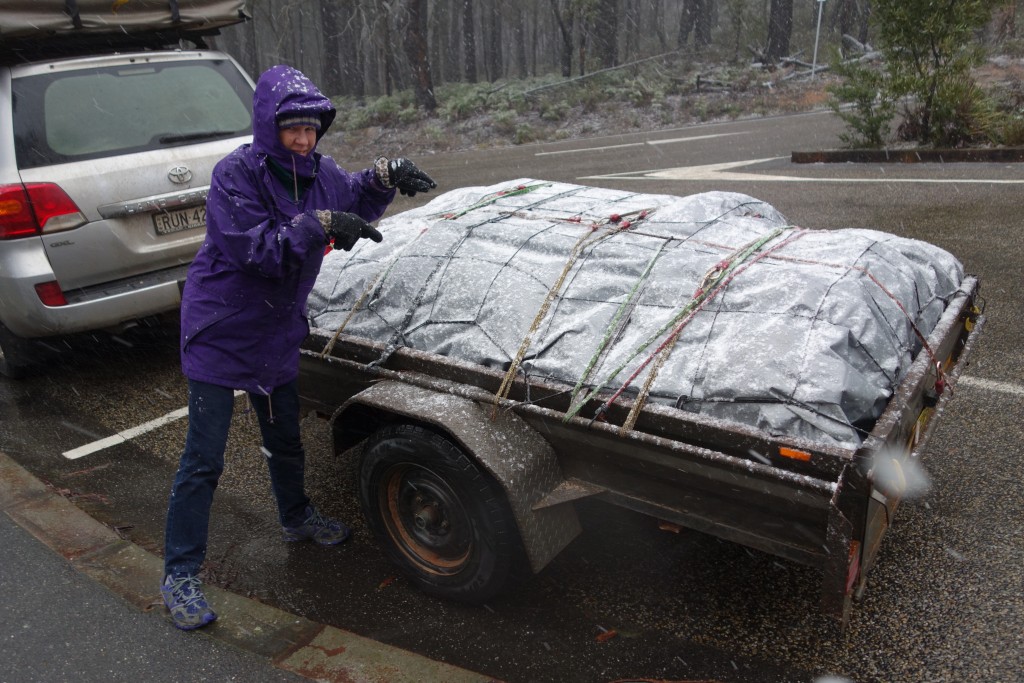
The trailer and its contents had been through a lot on this trip but we didn’t think snow would part of the experience
One of the park’s main attractions is majestic Mackenzie Falls and with all this rain we expected it to be absolutely roaring. With the temperature peaking out at around 2 degrees we rugged up for the 1.6 km return walk to the high lookout. It was definitely worth it as the clouds cleared long enough to reward us with great views of this spectacular waterfall which was really pumped after all the rain.
Our original plan was to spend two nights in the Grampians and enjoy more of this magnificent park, do a few long bush walks and explore a few extra features that make this mountain range so special. But the weather was a bit too grim and the forecast was even worse so we reluctantly headed north out of the park for a dry motel room in the modest town of Horsham. It had been a fun and novel day, that’s for sure, but with the temperature never rising above 5 degrees and a very cold night forecast in the empty campgrounds we suddenly became very sensible and enjoyed a hot shower and a warm bed that night.
From Horsham it was a matter of drawing the straightest line back to Sydney. Under beautiful blue skies we headed across flat green fields of wheat for as far as we could see all the way to Bendigo. We wished we could have spent more time in this impressive town with its great gold mining history, fascinating architecture and a warm friendly feel to it. Hopefully we can come back.
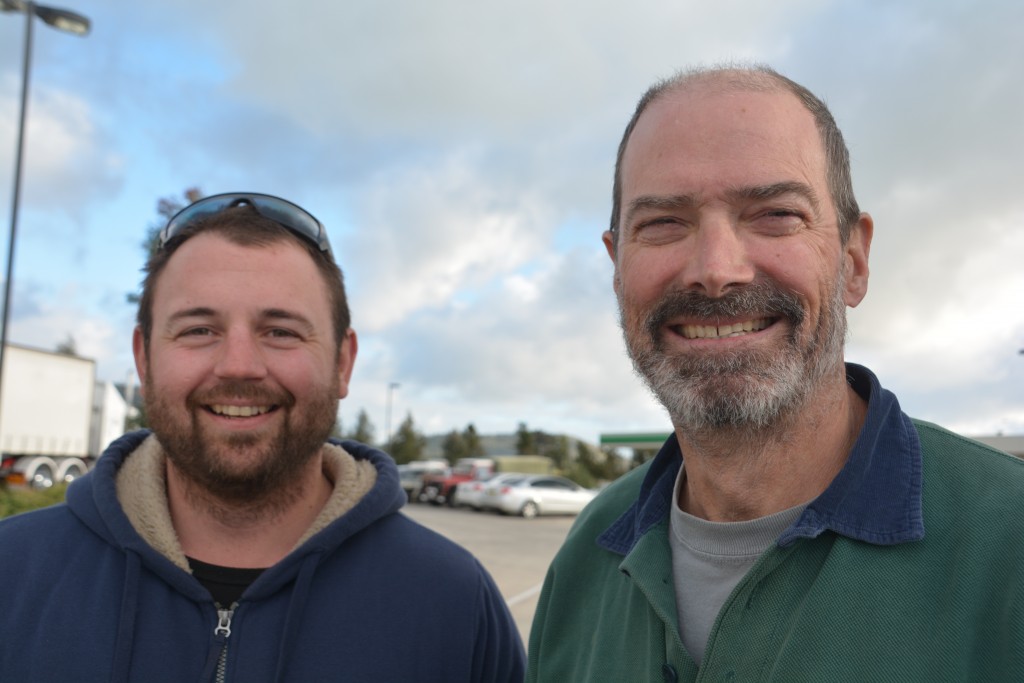
Carl won the hotly contested 28 day beard growing competition but I won the important ‘most grey’ category and might have sneaked home on the ‘best mustache’ category
On we went through Shepparton, enjoying the rich rolling plains from the warmth of our cars as we knew it never got out of single digits all day. In Wodonga we stopped for fuel and said goodbye to Anna and Carl, who had been our constant and perfect travel companions for the last month but who had decided to push all the way through to home on this last long day. There was no need for Julie and I to do this and in a way we wanted to prolong this fabulous trip at least one more day. So we picked a national park north of Albury on the New South Wales side of the border and turned off the motorway for a risky night of potential rain and cold weather.
Woomargama National Park is a rarely visited park on the western slopes of the Snowy Mountains, sinking in grey clouds as we arrived in the late afternoon. We collected some soggy firewood and set up camp at a lonely information board and shelter shed well inside the park. And not to put too fine a point on the weather but it started to hail. After a marathon effort that night I eventually managed to get a fire going and we enjoyed our last night on the road quietly together. It was 2 degrees when we went to bed.
That night had been our coldest yet in the roof top tent and we woke to find it was minus 2 degrees outside. Our tent was frozen stiff, as were the nearby puddles, windscreen and everything else. A fire was impossible but we slowly got going, had an extra coffee, clapped our gloved hands together to keep them warm and shook off as much ice from the tent as we could before packing it away.
With almost a reluctance to get home we pulled into the historic town of Gundagai to learn more about its past. Gundagai was built on the banks of the wide Murrumbidgee River which frequently flooded and was the weak point in the long road and rail journey between Sydney and Melbourne. To combat this problem they built two long wooden bridges over 100 years ago that spanned across the flood plains of the river. The bridges are largely still in place today and make for a fascinating short detour from the nearby modern day motorway.
Before long we were in our driveway again after 7,800 kilometres over 28 days, four states, 1,100 sand dunes, 1,200 litres of fuel, 13 national parks, almost 2,000 photos, over 20 spectacular sunsets and more unforgettable memories than ever thought possible. It was a journey for the ages, travelling with close family through beautiful places, camping in the bush, cooking on fires, waking each day to more adventures. We’re ready to do it all again!
